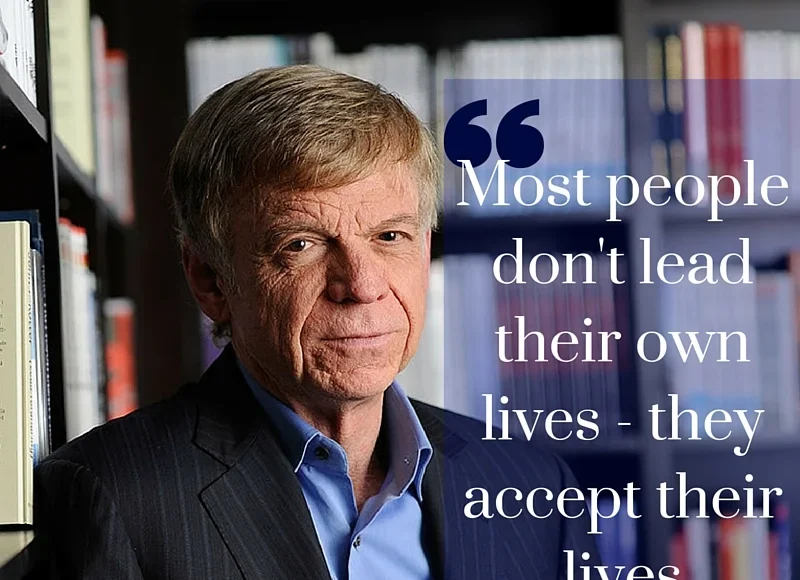|
Corporate Catalyst – While some of his Harvard Business School colleagues are prolific contributors to the Harvard Business Review, John Kotter has written only six articles. At first sight, it seems a slender basis for an academic career. But John Kotter’s timing has been impeccable. He was on the leadership trail at the right time. Then it was change management. Then culture. Then careers. If success was measured in article reprints, John Kotter is a success. Then there are his best selling books – Leading Change, Corporate Culture and Performance and A Force for Change. John Kotter celebrates 30 years at Harvard this year and was among the youngest Harvard faculty members ever given tenure and a full professorship. We caught up with John Kotter to learn how he manages to make the right connections with what is happening in the workplace CATALYST.
|
Q. You have written about change and the importance of a mobilising and inspiring vision. Is that possible in an environment marked by downsizing? A. It’s not easy, but it is both possible and necessary. The key is to go beyond the downsizing clichés – talking only of lean and nice. And carefree statements like “I see a smaller firm in the future” are not visions that allow people to see a light at the end of the tunnel, that mobilise people or that make them endure sacrifices. Q. So what’s your advice? A. Be creative, be genuine and, most of all, know why you’re doing what you’re doing. Communicate that and the organisation will be stronger. Anything short of this will breed the cynicism that results when we see inconsistencies between what people say and what they do, between talk and practice. Q. Can a single person ignite true change A. The desire for change may start with one person – the Lee Iacocca, Sam Walton or Lou Gerstner. But it certainly doesn’t end there. Nobody can provoke great changes alone. There are people that think it is possible, but it isn’t. Successful change requires the efforts of a critical mass of key individuals – a group of 2 to 50 people, depending on the size of the corporation- in order to move the organisation in significantly different directions. If the minimum of critical mass is not reached in the first stages, nothing really important will happen. Q. Failing to establish a sense of urgency is one of the key mistakes made by change leaders. In Leading Change you discuss seven additional steps in successful change efforts. A. That’s right. Beyond establishing a sense of urgency, organisations need to create a powerful, guiding coalition; develop vision and strategy; communicate the change vision; empower broad-based action; celebrate short-term wins; continuously re-invigorate the initiative with new projects and participants and anchor the change in the corporate culture. Q. What does this “guiding coalition” look like? A. The guiding coalition needs to have four characteristics. First, it needs to have position power. The group needs to consist of a combination of individuals who, if left out of the process, are in positions to block progress. Second, expertise. Third, credibility. When the group announces initiatives, will its members have reputations that get the ideas taken seriously? And fourth, leadership. The group needs to be composed of proven leaders. But remember, the guiding coalition should not be composed exclusively of managers. Leadership is found throughout the organisation, and it’s leadership you want – not management. Q. Who needs to be avoided when building this team? A. Individuals with large egos – and those I call “snakes.” The bigger the ego, the less space there is for anyone else to think and work. And snakes destroy trust. They spread rumours, talk about other group members behind their backs, nod yes in meetings but condemn project ideas when talking with colleagues. Trust is critical in successful change efforts and these sorts of individuals put trust in jeopardy. Q. “Communication” seems to crop up in most discussions on organisational effectiveness. What do you mean by this term? A. Effectively communicating the change vision is critical to success. This would seem obvious, yet executives often tend to stop communicating during change, which is exactly when they should be communicating more than ever. Change is stressful for everyone. This is the worst possible time for executives to close themselves off from contact with employees. Q. Who were your mentors? A. There were Paul Lawrence and Tony Athos at Harvard, and the social psychologist Ed Schein at MIT. They all took an interest in me. After that, you collect ideas. Q. Have you ever thought about working for an organisation or creating an organisation? A. Working for an organisation has never crossed my mind for a nano-second. As for creating one, at most I’ve had one or two employees. I’ve thought about building an organisation, but it’s not necessarily what I’m good at doing. Q. What are you working on now? A. My last book was a biography of Konosuke Matsushita who no-one, in the United States at least, knew anything about. Some big insights came out of that, which I’m still working through. Now I’m working on Leading Change 2 – Leading Change came out in 1996 – which is a more tactical book than its predecessor. It is told in the first person by people struggling through change. |









